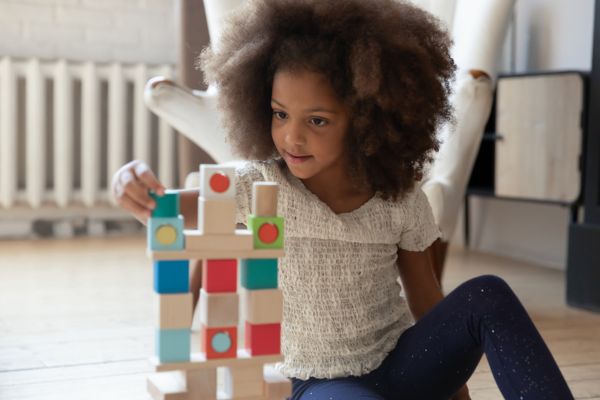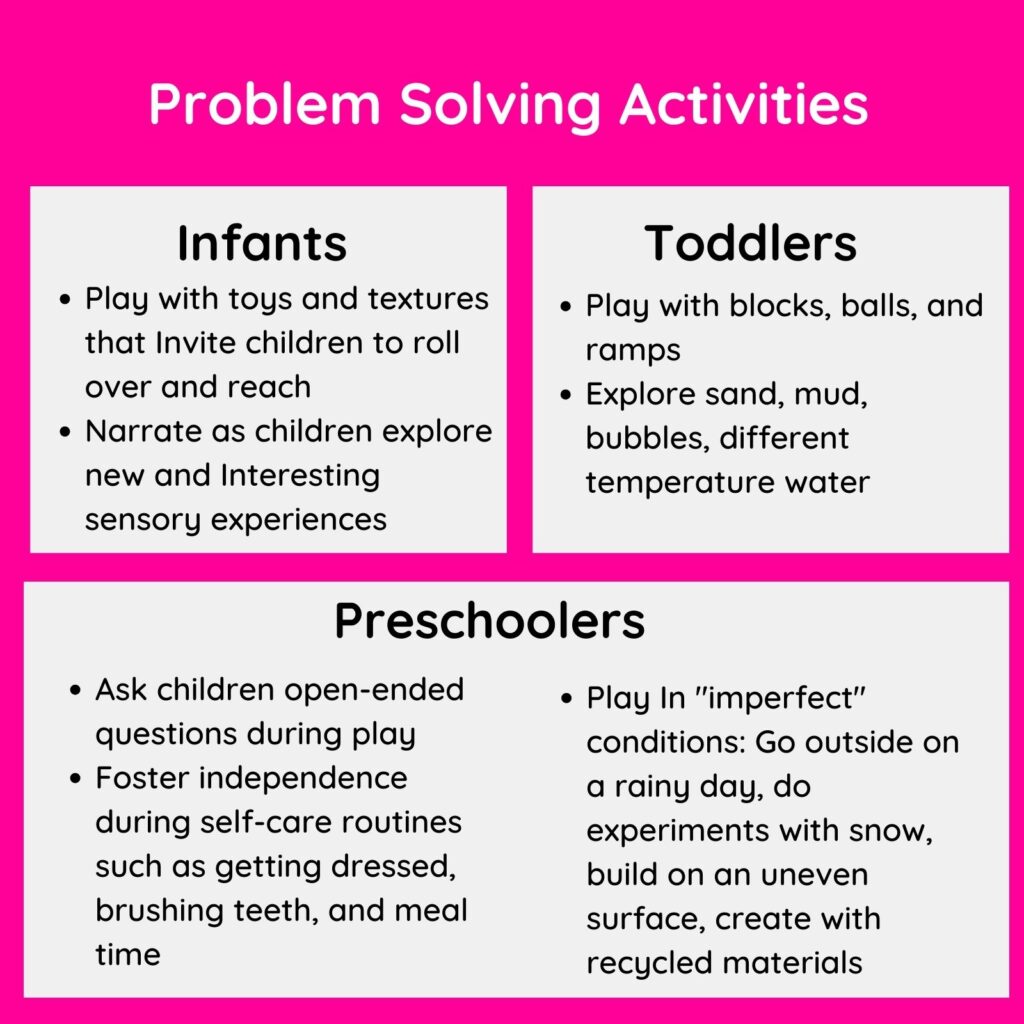
Throughout human existence, creative and curious homo sapiens have sought to solve problems. Whether they were figuring out how to roll heavy slabs of stone to build great structures, how to transport water across great distances, how to heal the sick, how to get to the moon, or how to communicate with loved ones on the other side of the world, human beings have tinkered and experimented their way to incredible feats unknown to other species. In child development, we categorize this incredible ability to identify, analyze, and solve problems under the developmental area of cognition.
From infancy, little, tiny humans almost automatically start to build this skill, in close conjunction with their emotional development. With the support of a loving caregiver, infants begin exploring the world around them. As a caregiver plays peek-a-boo with an infant, the baby giggles in delight as she explores object permanence, a term coined by developmental psychologist Jean Piaget. Here the infant understands that her smiling warm caregiver, her sense of safety and comfort, is still behind the hands even when she engages in this game of pretend play where she momentarily disappears. Infants explore their fingers and toes, place things in their mouth, and reach for sparkly or crinkly objects to understand the material properties of the world around them.
At Rayz Kidz, we believe that children’s development is interconnected, which means that often children are developing in multiple areas at once. Much like the emotional and cognitive connection above, one can also find a close connection between physical development and cognition. As infants add movement to their everyday life, their natural curiosity blossoms even more, as they understand cause-and-effect in the exciting world around them. Whether rolling round objects down ramps, building bridges with their favorite blocks, or feeling the different sensations of floral ice cubes or foam sensory bins, children are natural learners and explorers!
Caregivers can help to guide children in this process by supporting children’s curiosity, presenting them with new and exciting experiences and activities, and guiding their play to help give language to their discoveries. For example, caregivers might do our “Gliding Spiders” activity, where they provide children with toy spiders and open-ended materials, such as recycled tubes, yarn, tape, clothespins, and scissors, that invite them to explore the way that spiders build their webs, move up and down, and catch their food. Caregivers can find the balance between independence and assistance as children figure out how to connect the materials with tape and clothespins. The adult is there to help the child if they need it, but can encourage children to figure out on their own how to connect the materials and build a habitat for their toy spiders. Caregivers can ask open-ended questions throughout children’s play: “I wonder how spider webs stay up? I wonder how a spider chooses where he wants to build a web? I wonder how long it takes for a spider to build a web?” These types of questions do not have a single right answer, but instead are demonstrating that curiosity is healthy and a great way to learn about the world. Humans throughout time have asked these sorts of questions and this innate curiosity has led to so much discovery!
